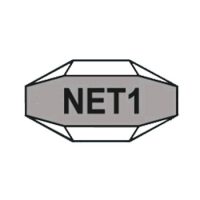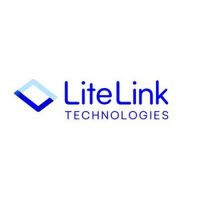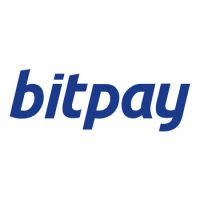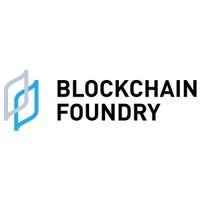Blockchain
Expansion of Japanese Metaverse Assets: Compliant JPY-based Stablecoin JPYW and Japanese blockchain game Mechaverse reached an official cooperation

On July 1, 2022, Tokyo local time, compliant JPY-based Stablecoin JPY World (JPYW) announced officially that it has reached an ecosystem co-construction and cooperation in transactions with the Japanese blockchain game —— Mechaverse. According to the official Twitter of Mechaverse, the two parties will explore and implement various aspects, such as the settlement, payment, liquidity injection, and staking derivatives of JPY-based Stablecoin in Mechaverse. Finally, it will achieve the goal of increasing number of users, creating a well-known animation IP image, and making it convenient to enter the Web3.0 metaverse.
JPYW is a prepaid token launched by PassPay that can be purchased and used on the official website of PassPay at a price of 1 YEN = 1 JPYW. JPYW ensures a 1:1 anchor with the YEN in the form of margin. As a compliant JPY-based stablecoin under the “Revision of Funding Resolution Act”, it has become the only blockchain stablecoin that is certified and licensed by the government of Japan. Meanwhile, the company has also finished submitting the application and the deposit for “issuer of prepaid payment method (internal)” to the government.
As the first Japanese mecha blockchain game of Mechaverse Labs, Mechaverse combines high-quality Japanese animation IP and playable blockchain games based on the Web3 operating platform and solution, as well as exploring the value of NFT and constructing the entrance to metaverse of Japanese anime mecha through GameFi’s feature of linking values.
This cooperation is seen as a bridge between the traditional Japanese market and the Crypto world which drives a new flow and value into the crypto world.
Why is JPYW the “only child” of the stablecoin?
With the strict filing and review mechanism of “Funding Resolution Act” in Japan, only JPY-based Stablecoin can operate legally after obtaining approval, which also prevents other types of stablecoins from entering the Japanese crypto trading market. As the “only child” of the stablecoin that has been certified by the local government, JPYW began to strive for compliance as early as before the “Funding Resolution Act” was released. The team hired the largest law firm in Japan to form a strong and legal consultant team to plan compliance, apply at the drafting stage of regulations and participate in various inquiries from the Financial Services Agency actively.
In terms of the custody method of collateral, the physical collateral of USDT/USDC are mostly bills and cash of commercial banks, while JPYW is a blockchain stablecoin that is fully collateralized by YEN, and all the collaterals will be handed over to the government. Therefore, the mechanism of exchange and redemption is more sound, the security of funds is stronger and the risk is lower.
JPYW will bring into full play of stablecoin and start by breaking three barriers: 1. Breaking the barrier between crypto assets and real assets; 2. Breaking the barrier of cross-border transactions and exchanges; 3. Breaking the barrier between crypto assets as the mainstream assets in the future digital society and the insufficient acceptance of reality.
To realize such a vision, PassPay must first expand the use cases of JPYW and enrich financial instruments and product solutions. Therefore, in terms of use cases, PassPay chose to cooperate with Mechaverse(a metaverse platform that also belongs to Japan) and similar Crypto projects. In terms of operation of users, JPYW can be obtained through gift card and purchase on its official website, which will be used after connecting to the Metamask wallet according to the official white paper. A large number of projects, including Mechaverse, are available on Metamask. It is easier to achieve operability and compatibility in the early stage of asset access.
PassPay will launch more financial products such as STO derivatives trading, physical NFT trading, and gold tokenized trading soon in the future.
Blockchain
HODL 2025 opens in Dubai, advancing the Emirates’ position as a global financial innovation hub
HODL 2025 opens in Dubai
Blockchain
Millionero Shines at TOKEN2049 Dubai

Millionero
Blockchain
Blocks & Headlines: Today in Blockchain – May 14, 2025

Blockchain’s evolution continues at breakneck speed, shifting from niche applications into mainstream finance, supply-chain integrity, and social impact initiatives. Today’s briefing spotlights five stories that illustrate this maturation: Cardano’s seamless asset integration in the privacy-focused Brave browser; a strategic partnership between Cokeeps and Maybank Trustees to bring tokenized wealth management to institutional clients; Ripple’s leadership framing blockchain as the dismantler of traditional banking silos; the UNDP’s pilot using distributed ledgers to improve HIV treatment tracking across Eurasia; and a novel IoT-blockchain collaboration to authenticate fine wines end-to-end. In this op-ed–style roundup, we analyze not only the mechanics of each announcement but also their broader implications for Web3’s scaling, DeFi’s credibility, and blockchain’s social-good potential.
1. Cardano Integrates Native Blockchain Assets into Brave Browser
What Happened
On May 13, Cardano foundation engineers unveiled a collaboration with Brave Software to natively support Cardano blockchain assets—ADA tokens and native tokens—within Brave’s wallet panel. Users can now view balances, send ADA, stake directly, and interact with back-end metadata for Cardano NFTs, all without leaving the Brave interface. This move follows Brave’s earlier Ethereum and Solana integrations, signaling a multi-chain future for privacy-centric browsers.
Analysis & Implications
-
User Experience Leap: By embedding Cardano functionality at the browser level, Brave eliminates friction for onboarding new users who would otherwise juggle external wallets or browser extensions. Easier access to staking and NFT markets could drive stronger engagement for Cardano’s ecosystem.
-
Multi-Chain Convergence: Brave’s strategy underscores the shift from siloed blockchain apps toward unified, chain-agnostic user experiences. As Web3 users demand seamless access across protocols, wallets and browsers will compete to offer the most inclusive multi-chain dashboards.
-
Cardano’s Market Position: For Cardano, this integration is a validation of its low-fee, high-throughput value proposition. While Ethereum remains dominant in DeFi and NFTs, Cardano’s energy efficiency and growing dApp roster may attract users seeking alternatives—especially if wallet UX barriers continue to fall.
Opinion
Brave’s embrace of Cardano assets exemplifies the coming era of “wallet-agnostic” access, where the browser becomes the front door to multiple blockchains. For Cardano, it’s a critical trust signal that boosts on-ramps and could accelerate liquidity in its DeFi protocols. Yet success hinges on robust in-browser security and responsive UI design—any wallet bugs or performance lags will erode the trust this collaboration seeks to build.
Source: CoinDesk
2. Cokeeps & Maybank Trustees Develop Blockchain Asset-Management Solutions
What Happened
Malaysia’s Cokeeps, a digital-asset custody pioneer, has partnered with Maybank Trustees to design and deploy tokenized asset-management platforms for institutional investors. The joint solution leverages a permissioned blockchain to record ownership of tokenized bonds, real-estate funds, and alternative-assets, while integrating smart-contract–driven compliance checks and real-time audit trails.
Analysis & Implications
-
Institutional Adoption: By combining Cokeeps’s custody technology with Maybank’s regulatory expertise and trustee services, the duo addresses two perennial barriers to institutional crypto investment: custody risk and compliance certainty. This model could serve as a blueprint for other Asia-Pacific custodians.
-
Tokenization Benefits: Tokenized securities on a shared ledger can reduce settlement times from days to seconds, lower transaction costs, and open fractional-ownership models—broadening access to asset classes historically reserved for high-net-worth individuals.
-
Regulatory Alignment: Embedding KYC/AML logic into smart contracts ensures that every token transfer automatically enforces jurisdictional rules. As regulators worldwide demand transparent on-chain auditability, such integrated controls will become table stakes for institutional offerings.
Opinion
This collaboration exemplifies how established financial institutions can embrace blockchain without ceding control. Rather than disrupting Maybank’s trustee role, tokenization enhances it—transforming trustees from manual record-keepers into guardians of programmable assets. The real test will be scale: can the platform handle high-volume trading with uncompromised security and consistency? If so, we may see a wave of legacy banks repackaging their services through blockchain rails.
Source: The Star
3. Ripple Board Member: “Blockchain Is Unbundling Banks”
What Happened
On May 14, Stuart Alderoty, a board member at Ripple Labs, declared in an industry webcast that blockchain technology is fundamentally “unbundling” traditional banking services—payments, settlements, custody, and compliance are each evolving into modular, chain-native offerings. He argued that banks will increasingly source best-of-breed infrastructure from fintech and blockchain providers rather than maintain monolithic, in-house systems.
Analysis & Implications
-
Modular Finance: Alderoty’s vision anticipates a composable finance ecosystem: banks orchestrate various on-chain services—liquidity pools, cross-border rails, automated KYC—via APIs, akin to how e-commerce platforms integrate third-party payment gateways and fraud-prevention tools today.
-
Competitive Pressure: Incumbent banks face competition not only from neobanks but also from protocol-level service providers (e.g., on-chain oracles, decentralized exchanges). To retain clients, banks must either build or partner to offer seamless, blockchain-enhanced products.
-
Industry Collaboration: Ripple itself underscores this shift: its On-Demand Liquidity service unbundles foreign-exchange and settlement from legacy correspondent banking, delivering real-time cross-border payments at reduced cost.
Opinion
The unbundling thesis places a premium on interoperability and standards. Without common protocols, financial services risk siloed “rails” that mimic today’s fragmented SWIFT-based processes. Collaborative industry consortia—like the U.K.’s Project Rosalind or Japan’s mHUB—will be crucial to define shared messaging formats and governance frameworks. For blockchain to truly disaggregate banking, ecosystem players must coalesce around open, secure standards.
Source: U.Today
4. UNDP’s Big Ideas: Using Blockchain to Fight HIV in Eurasia
What Happened
The United Nations Development Programme (UNDP) launched its “Big Ideas” pilot in Eurasia, deploying a blockchain-enabled platform to manage HIV treatment data across multiple countries. The solution uses a hybrid public-private ledger to ensure patient anonymity while providing authorized clinics and NGOs with secure, immutable access to treatment adherence records and drug-dispensation logs.
Analysis & Implications
-
Data Privacy & Integrity: The hybrid architecture combines zero-knowledge proofs on a public chain—verifying treatment events without exposing personal health information—with a consortium chain that controls participant permissions. This dual model balances transparency and confidentiality.
-
Cross-Border Collaboration: HIV programs often span regions with varying healthcare regulations. A shared blockchain registry simplifies data exchange, reducing duplication and ensuring each patient’s history is up to date, even when they move between clinics or countries.
-
Scalability & Sustainability: Running on energy-efficient proof-of-stake networks and leveraging off-chain data storage for sensitive medical records, the platform minimizes transaction costs while maintaining high throughput—essential for scaling across thousands of patients.
Opinion
UNDP’s blockchain pilot represents a maturation of social-impact use cases—from proof-of-concepts to production-grade systems. By prioritizing patient privacy and regulatory alignment, this model could extend to other health-data challenges, such as vaccine distribution or epidemic tracking. The key will be forging long-term partnerships between multilateral organizations, local health authorities, and blockchain providers to sustain and expand the network beyond the pilot phase.
Source: UNDP
5. Identiv, ZaTap & Genuine Analytics Digitally Authenticate Fine Wines
What Happened
Identiv, ZaTap, and Genuine Analytics have unveiled a joint solution that employs specialized IoT tags and blockchain to verify the provenance of fine wines. Each bottle is fitted with a tamper-evident sensor that records temperature, humidity, and location data onto a permissioned ledger. Consumers can scan an NFC-enabled label to view the wine’s end-to-end history—from vineyard pressing to cellar aging and global shipping.
Analysis & Implications
-
Counterfeit Mitigation: The fine-wine market suffers from widespread fraud, with counterfeit bottles estimated to comprise up to 20% of high-end sales. Immutable provenance records and sensor-backed condition reports significantly raise the bar for authenticity verification.
-
Consumer Trust & Engagement: Beyond security, the solution enhances the collector experience—buyers gain confidence in their purchase and a richer narrative around each vintage’s journey, potentially commanding higher resale values on secondary markets.
-
Cross-Industry Potential: This IoT-blockchain fusion can be adapted for other luxury goods—artworks, haute horlogerie, or premium spirits—where provenance and condition are paramount.
Opinion
By blending real-world data streams with ledger immutability, this collaboration exemplifies blockchain’s most compelling value proposition: trusted digital twins of physical assets. However, the system’s integrity depends on robust IoT security—if sensors are spoofed or tampered with, the chain of trust breaks. Stakeholders must therefore enforce secure tag provisioning, periodic audits, and tamper detection measures to uphold the solution’s credibility.
Source: PR Newswire
Conclusion
Today’s blockchain dispatch underscores a pivotal shift: decentralized ledgers are weaving into the fabric of finance, social impact, and supply-chain integrity. From Brave’s browser-level Cardano support to tokenized asset platforms, from the unbundling of banking services to health-data pilots and luxury-goods authentication, blockchain is proving its versatility and maturing beyond speculative markets. As on-chain and off-chain worlds converge, interoperability, security, and standards will determine which projects scale and which falter. For stakeholders across Web3, DeFi, and enterprise IT, the imperative is clear: embrace modular architectures, uphold rigorous governance, and focus on real-world value—only then will blockchain realize its promise of trust, transparency, and transformative efficiency.
The post Blocks & Headlines: Today in Blockchain – May 14, 2025 appeared first on News, Events, Advertising Options.
-

 Blockchain6 days ago
Blockchain6 days agoBitget Blockchain4Youth sostiene l’innovazione del Web3 e dell’IA all’hackathon “Build with AI” di Google Developer Group
-

 Blockchain Press Releases6 days ago
Blockchain Press Releases6 days agoBybit Surpasses 70 Million Users, Reinforces Commitment to Transparency and Institutional Growth
-

 Blockchain7 days ago
Blockchain7 days agoBlocks & Headlines: Today in Blockchain – May 9, 2025 | Robinhood, Solana, Tether, China, Women in Web3
-

 Blockchain Press Releases2 days ago
Blockchain Press Releases2 days agoBullish partners with the Gibraltar Government and GFSC to pioneer world’s first crypto clearing regulation
-

 Blockchain3 days ago
Blockchain3 days agoBlocks & Headlines: Today in Blockchain – May 12, 2025 | Rootstock, Zimbabwe Carbon Registry, Fastex, 21Shares, The Blockchain Group
-

 Blockchain Press Releases3 days ago
Blockchain Press Releases3 days agoBybit Introduces BOB to P2P: Bolivian Traders Can Now Buy, Sell in Local Currency and Earn Commissions
-

 Latest News6 days ago
Latest News6 days agoCasino Kings Knocks Out Partnership with Boxing Powerhouse BoxNation
-

 Blockchain6 days ago
Blockchain6 days agoIndia’s Fintech Market to Reach $990 Billion by 2032 at 30.2% CAGR – Fintech Firms Eye Untapped Indian Digital Payments Market with Secure, Low-Cost Digital Financial Solutions








































